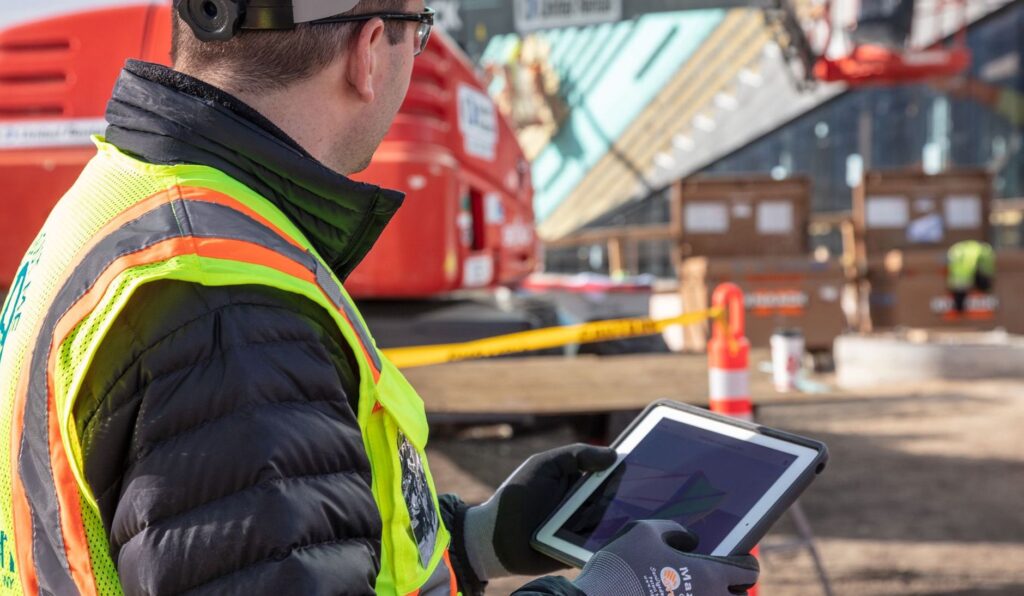Efficient equipment management is crucial to meeting project deadlines, ensuring safety, and controlling costs. A staggering 80% of construction delays are attributed to equipment mismanagement or unavailability, underscoring the critical role of streamlined equipment operations. Traditional methods like manual tracking, phone calls, and fragmented paperwork are increasingly ineffective, leading to inefficiencies that slow down projects, inflate budgets, and compromise safety standards. The industry now requires innovative, tech-driven solutions to tackle these challenges, and new approaches are reshaping how construction equipment is managed.
Construction equipment management software has revolutionized the field by introducing digital tools that streamline operations. These tools provide real-time tracking, automate maintenance schedules, and give data-backed insights into equipment usage, leading to smarter decision-making. This blog will explore cutting-edge methods that construction companies are adopting to improve efficiency, reduce costs, and enhance overall project success.
The Shift Towards Digitalization in Equipment Management
As the construction industry embraces the digital age, a notable shift has occurred from manual processes to digital tools that offer greater efficiency and accuracy. Construction equipment management software is at the forefront of this transformation, introducing tools like cloud-based applications, Internet of Things (IoT) devices, and mobile apps that simplify the tracking and management of equipment.
Key Benefits of Digital Tools
- Real-Time Tracking: Digital solutions allow for real-time monitoring of equipment location, ensuring that resources are optimally allocated across projects.
- Data Centralization: With cloud storage, all data is easily accessible, facilitating collaboration and data sharing among teams.
- Enhanced Decision-Making: Digital tools offer data insights, enabling managers to make informed decisions based on equipment availability, usage patterns, and maintenance needs.
Example Technologies: IoT sensors provide instant updates on equipment health, GPS tracking monitors real-time location, and cloud-based applications integrate all data into a centralized hub, accessible from mobile devices on-site.
Real-Time Equipment Tracking and Asset Visibility
One of the standout benefits of digital transformation is real-time equipment tracking, enabled by technologies such as GPS and telematics. This feature allows companies to know the exact location and status of every piece of equipment, reducing time wasted on searching for or reallocating assets. Approximately 40% of construction projects see significant delays due to misplaced or underutilized equipment, which real-time tracking can largely prevent.
Importance of Real-Time Tracking
Real-time tracking helps managers to:
- Reduce Idle Times: Equipment allocation becomes more strategic, minimizing the number of machines sitting idle.
- Improve Project Timelines: By knowing precisely where each piece of equipment is, project managers can make swift adjustments, keeping timelines on track.
Use Case: A large construction firm incorporated GPS tracking into their fleet and reported a 30% decrease in equipment downtime, as managers could quickly allocate assets to locations in need. This improvement not only sped up the project but also saved costs associated with rental equipment.
Predictive Maintenance: Minimizing Downtime and Repair Costs
Equipment breakdowns on a construction site can lead to costly delays. Predictive maintenance, powered by advanced analytics and IoT sensors, identifies potential issues before they lead to equipment failure. Unlike traditional maintenance, which follows a set schedule, predictive maintenance uses real-time data to assess equipment health and predict when parts might need replacement.
Benefits of Predictive Maintenance
- Reduced Downtime: By addressing potential failures early, companies can avoid unplanned downtime, which can delay projects and increase costs.
- Lower Repair Costs: Early detection of wear and tear prevents minor issues from turning into major, expensive repairs.
- Increased Equipment Longevity: Regular monitoring and timely interventions extend the life of equipment, optimizing investment returns.
Case Study: A construction company using predictive analytics saw a 25% reduction in maintenance costs in the first year, as the data-driven insights allowed them to schedule repairs efficiently, avoiding major malfunctions.
Enhancing Workforce Efficiency Through Automation
Automation is transforming workforce efficiency on construction sites, particularly in scheduling, dispatching, and equipment maintenance. Construction equipment management software often includes automation features that handle these tasks, reducing the workload on managers and minimizing human error.
Role of Automated Workflows
Automated workflows are beneficial for:
- Scheduling and Dispatching: Automating these processes reduces delays in assigning equipment to various sites, allowing for smoother operations.
- Maintenance Scheduling: Software can automatically alert the team when maintenance is due, preventing missed check-ups that could lead to breakdowns.
Potential ROI: Companies implementing automation tools report a 15-20% increase in productivity, as automated reminders and task allocations free up time for workers to focus on other critical aspects of the project.
Leveraging Data Analytics for Improved Decision-Making
The construction industry has become increasingly data-driven, and the ability to collect, analyze, and act on data from equipment is invaluable. Construction equipment management software offers powerful data analytics tools that transform raw data into actionable insights, enabling better decisions.
Types of Insights Gained
- Equipment Usage Patterns: Understanding which equipment is used most frequently helps in deciding when to lease or buy additional machinery.
- Lifecycle Trends: Predictive insights into equipment lifecycle allow for optimal replacement scheduling, preventing disruptions.
- Maintenance Needs: Detailed maintenance data enables companies to anticipate future needs and plan accordingly.
Integrating Analytics: Many project managers now integrate these analytics into their project management workflows, optimizing resources and reducing wastage.
Example: A company that analyzed usage data discovered that 20% of their fleet was underutilized. By reallocating these assets, they reduced rental costs and increased fleet efficiency by 18%.
Conclusion
Incorporating modern technology into construction equipment management is no longer optional; it’s a strategic necessity. From digitalization and real-time tracking to predictive maintenance and automation, these new approaches collectively drive efficiency, reduce costs, and help companies stay competitive in an industry that demands adaptability. Construction equipment management software not only streamlines daily operations but also empowers managers with data and tools to make informed, impactful decisions.
For construction businesses striving to improve project outcomes and build a sustainable competitive edge, exploring and investing in these innovative tools and techniques is the way forward. Embracing these advancements is an investment in both current project success and long-term operational efficiency.
